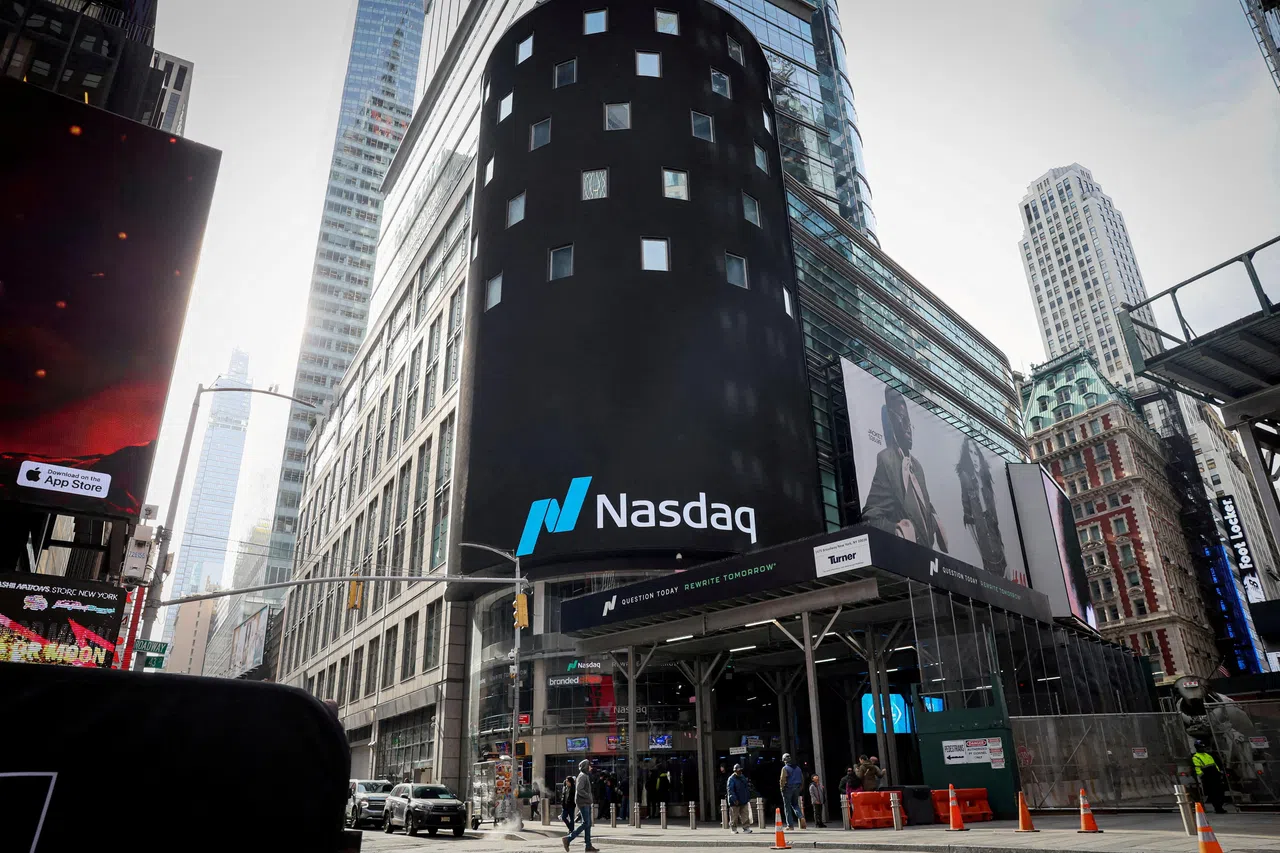WORRIES over tech earnings and a slowing US economy slammed the Nasdaq Composite index on Friday (Aug 2) as it extended recent declines to fall 10 per cent below its record high, confirming it was in correction territory.
The tech-heavy index fell 2.4 per cent on Friday after a softer-than-expected jobs report spurred worries over whether the Federal Reserve will need to deliver hefty interest rate cuts at its next meeting to prevent the US economy from falling into recession. Disappointing earnings from Amazon and Intel have also spooked investors.
The Nasdaq has dropped 10 per cent from its record close of 18,647.45 points on Jul 10. An index or stock is widely considered to be in a correction when it closes 10 per cent or more below its previous record closing high.
“This is an old-fashioned correction going on,” said Tom Plumb, chief executive and portfolio manager at Plumb Funds. “We passed the economic torch from the perception of growth to the perception of needing government intervention with lower interest rates to stabilise the economy.”
Over the past 44 years, the index has slipped into correction territory after hitting a new high 24 times, or about once every two years, according to a Reuters analysis of LSEG data. In two-thirds of these cases, the index traded higher a month after entering correction territory, data showed.
The last time the index marked a correction after scaling a new high was on Jan 19, 2022. The index then extended losses to fall 36 per cent from its high before bottoming out in December of that year.
BT in your inbox
Start and end each day with the latest news stories and analyses delivered straight to your inbox.
The Nasdaq is still up 11.8 per cent year-to-date. The S&P 500, which has lost about 6 per cent from its high, is up 12.1 per cent for the year.
The Nasdaq’s tumble comes as investors turn more wary of the highly valued tech stocks that have led the charge higher for most of the year, driven by excitement over the potential of artificial intelligence.
Stocks are also heading into what is typically a seasonally rocky period.
September and October tend to be volatile months for US shares. The Cboe Volatility index – Wall Street’s most watched gauge of investor anxiety – averages 21.8 in October, the highest for any month, according to LSEG data going back to 1992.
“This isn’t an unusual seasonality pattern. We had a similar sell-off in August 2023, although perhaps this is more forceful,” said James St Aubin, chief investment officer at Ocean Park Asset Management.
“I would look at this as the correction a lot of people were expecting to see coming into the summer. All kinds of things are piling on top of each other to make the market nervous,” St Aubin added.
Lacklustre results from Tesla and Alphabet last month compounded worries about stretched valuations. At the same time, there may be concern that weaker-than-expected results reflect a broader softness in the economy.
“The focus of the market is no longer simply about earnings, but instead, what earnings are saying about the economy overall,” JJ Kinahan, CEO IG North America & president of Tastytrade, said.
“Surging bond prices and falling yields are signs investors are seeking safe havens. All of that is an indication that the economy is slowing globally, and it’s giving investors cause for concern,” Kinahan added. REUTERS






